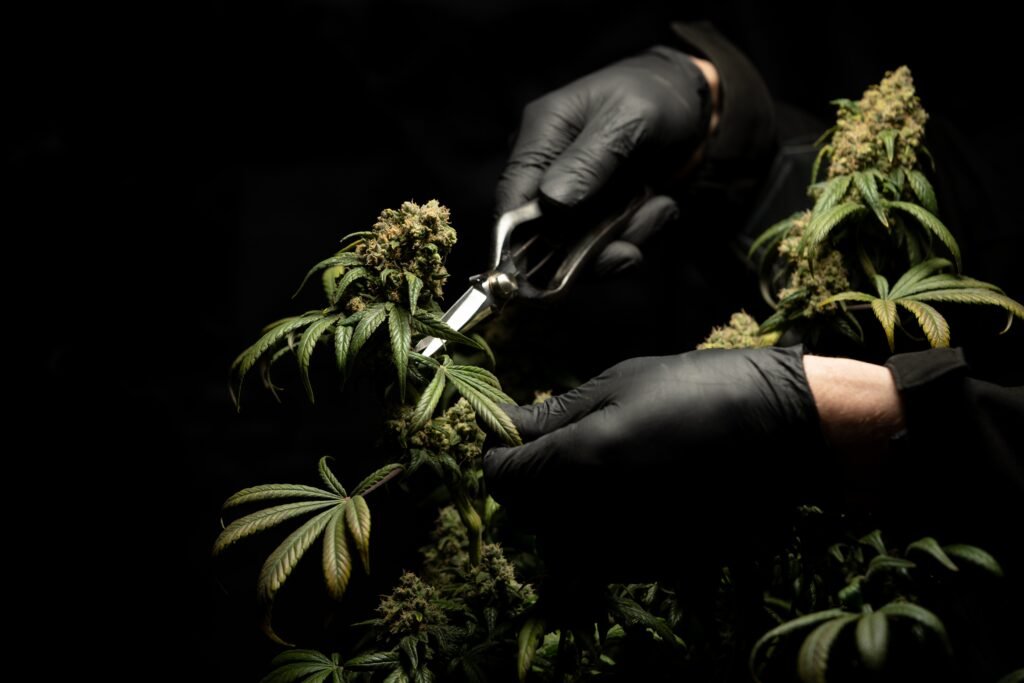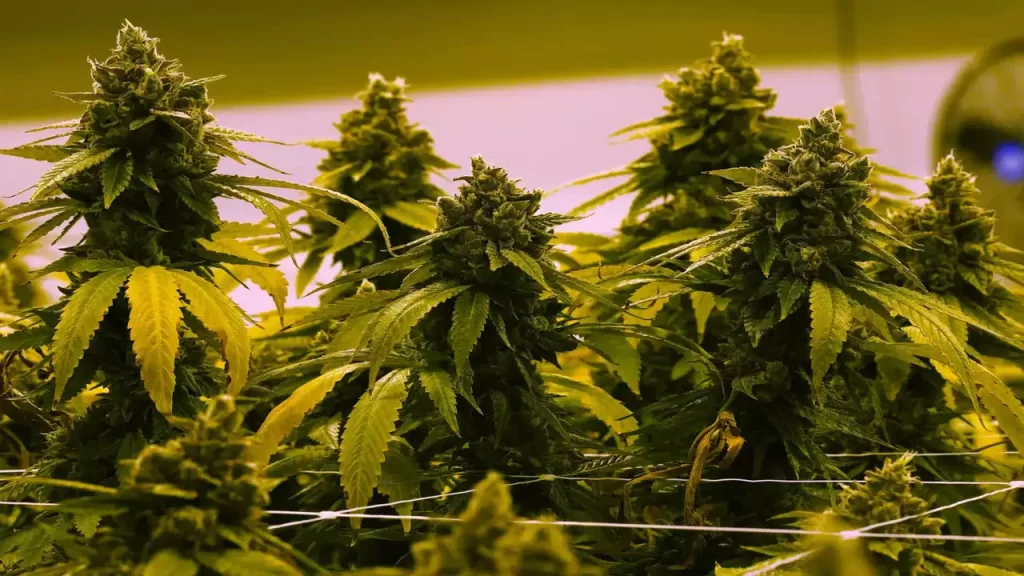The Ancient Origins of Cannabis Cultivation
The history of cannabis cultivation dates back to the ancient civilizations of China, India, and Persia. The plant was used for medicinal purposes and spiritual rituals, with evidence suggesting that it was even revered as a divine plant by some cultures.
Over time, cannabis spread to different parts of the world, including Africa and Europe. It wasn’t until the 16th century that Europeans began using cannabis for its psychoactive properties, leading to the widespread use and cultivation of the plant for recreational purposes.
The Rise of Home Growers
Home growers who are eager to raise distinctive strains in their own homes have increased in number recently. This is mainly because of shifting perspectives on cannabis use and initiatives to make it legal in some regions of the world. Many home growers have a desire to create their unique strains as a way to express their creativity and passion for the plant.
They hope to create something exceptional that stands out from commercial strains by experimenting with different breeding techniques and environmental factors. Consumers also have an increasing demand for organic and locally grown products.
Home growers can provide high-quality cannabis free from harmful chemicals or additives while supporting small-scale agriculture. Overall, the rise of home growers is an exciting development in the world of cannabis cultivation that could lead to innovations and advancements in strain development.
Understanding Genetics
The basics of cannabis genetics
It’s essential for home growers to comprehend the fundamentals of cannabis genetics. The flowers of cannabis plants, which have both male and female reproductive organs, are either fertilized by male pollen or do not become fertile.
Fertilization leads to seed production, while unfertilized flowers produce resin-rich buds. Cannabis plants have two main species: Cannabis Sativa and Cannabis Indica.
Sativa strains are known for their energetic and uplifting effects, while Indica strains provide a more relaxing and calming experience. Understanding these fundamental genetic differences can help you select the suitable strains for your desired outcome.
The importance of selecting quality seeds or clones
The quality of your starting material is critical when it comes to growing cannabis. Whether from seeds or clones, choosing high-quality genetics that has been selectively bred for desirable traits like potency, flavor, aroma, and yield is essential.
Seeds should be sourced from reputable breeders who use responsible breeding techniques that result in stable and reliable genetics with predictable outcomes. Clones offer an alternative option for growers who prefer not to germinate seeds but still want access to proven genetic lineages.
How to identify male and female plants?
Identifying male and female cannabis plants is vital because only females produce the resinous buds we seek as consumers. Male plants have pollen sacks, which can pollinate female plants, causing them to focus on seed production instead of bud development.
Female “pre-flower” nodes tend to show themselves sooner than males on most strains around weeks 4-5 of the vegetative growth stage – look for small pistils coming out from between the leaves at these nodes (or potential calyxes if later in the veg stage). Instead, males will show little balls/popcorn-looking clusters at this time, eventually becoming pollen sacks.
If you don’t want to pollinate your females, ensure you identify and remove any males as early as possible before they start producing pollen. If breeding is your goal, then make sure you separate the males from the females before pollination to minimize the risk of accidental pollination.
Breeding Techniques
The Debate: Crossbreeding vs Inbreeding
The debate to find best weed in DC with breeding techniques has raged for years amongst cannabis breeders. Some argue that crossbreeding is the best way to create new strains with desirable traits, while others swear by inbreeding to create stable and predictable strains.
Crossbreeding involves crossing two genetically distinct plants to produce offspring with a combination of traits from both parents. The result can be unpredictable, but it allows for creating entirely new strains with unique characteristics.
On the other hand, inbreeding involves breeding plants with similar genetics to stabilize desired traits and create a more consistent strain over time. Both methods have their place in cannabis breeding, depending on what you’re trying to achieve.
Crossbreeding is excellent if you’re looking for something completely new and unique, but it can be a gamble. In contrast, inbreeding is your best bet to stabilize certain traits over time and create a more consistent strain.
Creating Stable Strains Through Selective Breeding
One of the keys to creating stable cannabis strains is selective breeding. This involves identifying desirable traits and using plants as parents for future generations. Over time, this process will lead to offspring with increasingly predictable characteristics.
When selecting plants for breeding, look for desirable qualities such as high potency or disease resistance. It’s also important to consider the plant’s overall structure and appearance since this can impact yield potential and quality.
Once you’ve identified your parent plants, keeping track of their genetics over multiple generations is essential. This will help you predict how their offspring will turn out and allow you to breed them based on desired characteristics selectively.
Tips for Successful Pollination
If you want to breed your cannabis strains, then successful pollination is essential. While it may seem like a simple process, there are a few things you need to keep in mind to ensure success.
Firstly, make sure you have both male and female plants on hand. You’ll need the males to produce pollen and the females to receive it.
Secondly, timing is critical when it comes to pollination. Wait until your female plants have matured before pollinating them for the best results.
When pollinating, use a small brush or cotton swab to transfer pollen from the male flowers onto the female flowers. Avoid touching parts of the plant with your hands during this process since this can introduce bacteria and other contaminants.
Breeding cannabis strains can be a fun and rewarding experience if done correctly. By understanding the differences between crossbreeding and inbreeding, using selective breeding techniques, and following these tips for successful pollination, you’ll be well on your way to creating unique and stable cannabis strains that are truly one-of-a-kind.
Environmental Factors
Optimal Growing Conditions for Cannabis Plants: It’s All About the Roots
You must make sure the cannabis is grown in the proper environment if you want to grow top-notch cannabis strains. When talking about ideal settings, lighting and temperature immediately spring to mind. However, many beginner growers must focus more on one critical factor – the roots. Roots act as a plant’s foundation and thus should always be addressed.
Cannabis plants require a well-draining soil mix with adequate nutrients to develop robust root systems. A pH of 6-7 is ideal for cannabis plants, but some strains may prefer slightly acidic or alkaline soil. Overwatering can be fatal to your plants, so it’s crucial to let the soil dry before watering them again. Optimal root conditions will produce more vigorous plants that absorb more water and nutrients and produce higher yields.
Indoor vs. Outdoor Growing Techniques: How to Choose the Right Method for You
There are two main ways to grow cannabis: indoor growth and outdoor cultivation. Depending on your objectives and resources, each has benefits and drawbacks.
More environmental control over elements like humidity, temperature, and lighting is possible when growing things indoors. This means growers can experiment with different growing techniques like hydroponics or aeroponics.
However, indoor setups require significant investments in equipment such as grow lights or CO2 generators, which can be costly. Outdoor cultivation offers natural sunlight, fresh air circulation, and an abundant supply of carbon dioxide (CO2) from surrounding vegetation, resulting in larger yields than indoor growth if done correctly.
Additionally, outdoor grows cost less than indoor setups since most of your equipment is provided by nature itself! On the downside, outdoor cultivation exposes crops to environmental factors like pests or extreme weather conditions that could ruin your harvest.
Lighting, Temperature, Humidity, and Air Circulation: Fine-tuning the Essential Factors
The four fundamental factors that affect cannabis growth are lighting, temperature, humidity, and air circulation. Getting this right is crucial for maximizing yield and potency.
Lighting is crucial because it is crucial to photosynthesis, which is how plants turn light into energy. In order for cannabis to properly flower, it has to be exposed to light for 12–18 hours per day during the vegetative phase and for 8–12 hours at night.
Since they generate high-intensity levels for the best development, high-intensity discharge (HID) bulbs are the preferred choice for indoor growers. During the vegetative phase, temperatures should be maintained between 18°C and 27°C, and during the flowering stage, between 21°C and 24°C. Too hot or cold temperatures can stunt your plant’s growth or even kill them!
Humidity levels must also be maintained within certain limits depending on the plant’s stage of life. During vegetation stages, humidity should range between 50%-70%, while flowering stages require lower levels of 40%-50%.
Adequate air circulation is critical as it helps maintain a healthy environment by reducing stagnant air pockets where mold or mildew can thrive. Good ventilation will move fresh air around your plants and keep pests at bay; therefore, investing in a fan is essential!
The Art of Harvesting and Curing Cannabis
When to Harvest Your Plants: It’s All in the Trichomes
One of the most critical aspects of cultivating cannabis is determining when to harvest the plant. Timing is crucial; a few extra days can significantly impact the potency and flavor of the finished product. Even though there are various strategies for figuring out when to harvest cannabis, one of the most trustworthy ones is to examine the trichomes.
Trichomes are tiny, mushroom-shaped glands on cannabis plants containing all its potent cannabinoids like THC, CBD, and CBN. As you approach your plant’s peak ripeness, these trichomes will change color from clear to cloudy or amber.
This transformation signals that it’s time to harvest your buds for maximum potency and flavor. So don’t get greedy and wait too long before harvesting; once those trichomes turn amber, you’re already losing some of that precious THC!
Proper Drying and Curing Techniques: The Secret to Amazing Flavor
Once you’ve harvested your plants, it’s time for another critical step in creating top-quality cannabis: drying and curing. The drying process involves hanging your bud’s upside down in a cool, dark place with good air circulation for about a week or two until they’re sufficiently dry but not brittle. Then comes the curing process—a crucial step many home growers overlook or rush through.
Properly curing cannabis involves sealing dried buds in an airtight jar with humidity packs at around 62% humidity level. Then store them in a cool, dark place for at least two weeks, preferably up to several months!
During this time, chemical reactions within the bud enhance their flavors while reducing harshness. But be warned: rushing through this process can ruin months of hard work! So don’t rush through drying or curing; your buds will lose their aroma and flavor. Instead, take your time and savor the art of creating flavorful, potent cannabis.
Creating Your Unique Strains
Cannabis cultivation is an art form as well as a process for producing a plant. Home growers can demonstrate their abilities and creativity through the fascinating and imaginative process of choosing, developing, and perfecting new strains. Creating your unique strain can feel like a culmination of all the effort you’ve put into your home growing operation.
Selecting Desirable Traits for Breeding New Strains
When selecting desirable traits for breeding new strains, the goal is to create a plant that embodies the qualities you’re looking for. This could be anything from flavor profile to potency or growth pattern. It’s essential to identify what you want before starting the breeding process.
Some traits are more accessible to identify than others, such as physical characteristics like leaf shape or color. Other traits might be more subjective, like taste or smell.
For these traits, relying on your preferences rather than following trends or popular opinion is essential. This is where the artistry of cultivating cannabis comes into play – it’s all about creating something uniquely yours.
Keep accurate records of your Breeding Experiments
Breeding new strains involves a lot of trial and error, so keeping accurate records of each experiment is essential. Record keeping should include notes on which plants were used in each crossbreed, how they were pollinated or propagated, and any changes in growth patterns or physical characteristics throughout the process. It’s also helpful to keep detailed notes about environmental conditions during each growth and flowering stage.
You can start to spot trends that can assist direct upcoming breeding experiments by tracking these variables over time. It will be possible for you to share your experiences with others who are eager to learn from your work if you keep a journal of every step of your journey as a cannabis grower.
Testing and Refining Your New Strain over Time
Testing and refining your new strain is an ongoing process that requires patience and dedication. Once you’ve bred a new strain, testing it for potency, flavor, and other desirable traits is important. It may take several growing cycles to refine the plant into something unique.
You must be open to feedback from others who try your strain during this time. Listen to their feedback and trust your instincts about what you want your plant to be.
Remember that cultivation is an art form – there’s no right or wrong way of doing things. As you refine your new strain over time, you’ll discover what works best for you and what makes your plant stand out.
Navigating Legal Issues
Overview of legal considerations for home growers in different regions/countries
As much as we would like to believe that cultivating your cannabis strains is entirely legal and free from scrutiny, the reality is far from it. The laws surrounding home growing vary greatly depending on where you live and even within the same country. This makes it essential to become familiar with the laws governing cannabis cultivation in your region or country before you start growing. In some countries and states, home cultivation is entirely illegal, with severe penalties for anyone caught doing so.
In some other areas, like Washington DC weed legalization took long back. It allowed for medicinal purposes only or under strict guidelines that require permits and licenses. Some places may limit the number of plants you can grow at home, while others have no limits. It is also essential to consider the potential consequences of selling or sharing your homegrown strains with others. All these factors should inform your decision to cultivate your cannabis strains.
The Pros and Cons of Legalizing Homegrown Cannabis Strains
The legalization of cannabis has been a contentious issue worldwide for decades now. Still, as public opinion continues to shift towards acceptance and tolerance, more countries are slowly beginning to legalize marijuana use both recreationally and medicinally, even allowing for home cultivation in some cases. One obvious advantage of legalizing homegrown cannabis is that people will have access to high-quality strains at a lower cost than buying from dispensaries or street dealers. It will also become more accessible for people who use cannabis medicinally to access various strains they can grow without risking prosecution.
On the flip side, there are concerns around security and safety measures when large-scale cultivation happens within residential areas, odor control being one such issue among many others. Legalization could also increase black market activities if home growers don’t adhere to the regulations.
Additionally, there is always the risk of attracting unwanted attention from law enforcement if you’re not well-versed in the legalities of cannabis cultivation. Navigating through the legal issues surrounding homegrown cannabis can be a daunting task.
With confusion around laws and policies still rife among governments worldwide, it is crucial to be aware of your local regulations and avoid falling foul of them. However, with research and knowledge on your side, cultivating your unique strains can be a rewarding experience that allows you to take control of what you consume and enjoy the fruits of your labor within the confines of legality.
Conclusion: The Joy of Cultivating Your Unique Strains
Personal satisfaction in creating something unique from scratch.
There is nothing quite like the joy of creating something from scratch. When it comes to cannabis cultivation, this feeling is multiplied tenfold. Knowing you have successfully bred and cultivated your unique strain brings unparalleled pride and satisfaction.
It’s a labor of love that requires patience, dedication, and a deep understanding of genetics and horticulture. Creating your strains allows you to craft something unique that no one else has ever tried.
You can experiment with different flavors, aromas, effects, and physical characteristics to create a strain that perfectly suits your needs or preferences. Whether you’re looking for a potent high that leaves you feeling relaxed and euphoric or a more mellow sensation that helps with anxiety or pain relief, cultivating your strains gives you the power to tailor the experience exactly how you want it.
Sharing your creations with others who appreciate the artistry behind it all.
One of the best things about cannabis culture is the sense of community that surrounds it. People passionate about cannabis love sharing their knowledge and experiences with others who feel the same way.
When you cultivate your strains at home, you become part of this community even more profoundly. Sharing your creations with other cannabis enthusiasts can be incredibly rewarding. Not only do they experience something genuinely original and unique, but they also get to appreciate the artistry behind it all. Cultivating high-quality marijuana strains takes skill, patience, perseverance, and attention to detail – qualities highly valued among creative communities worldwide.
Cultivating your weed strains rather than buying it from DC dispensaries is a profoundly satisfying endeavor for anyone who loves cannabis culture. Whether you’re looking for personal fulfillment or want to share your creations with others, there’s no denying the joy of this unique and rewarding hobby.
So why not give it a try? You might be surprised at how much you enjoy the process and the results.





